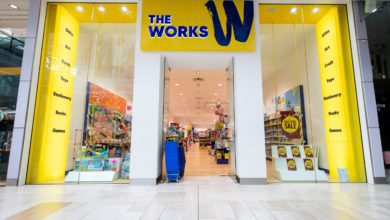Can the John Lewis Partnership reach its goals?
Retail Sector discusses the latest plans from Sharon White chair of the John Lewis Partnership, reflects on the company’s previous five year plan and looks into the challenges it may face achieving its goals

Register to get 1 free article
Reveal the article below by registering for our email newsletter.
Want unlimited access? View Plans
Already have an account? Sign in
Last week the chair of the John Lewis Partnership Sharon White made a commitment to return the company to profitability by 2026 in a speech to the Employee Ownership Association.
This promise comes just three years after White started a five year plan at the company which amongst other things aimed to see company profits reach £200m by 2022 and £400m by 2025.
After three consecutive years of losses it is clear that the previous goals have not and will not be hit. So how well did the company stick to the other parts of the five year plan, how likely is it to keep the most recent promise and what challenges will it face in doing this?
The five year plan
As previously mentioned the John Lewis Partnership unveiled a bold five year plan in October 2020, one of the first things White did after she was appointed chair in February 2020.
While it’s clear that the profit goals were overly ambitious, especially considering the world was in the midst of a pandemic, there were other parts of the plan that have seen some success.
For example, the company mentioned its partnership with Deliveroo to deliver Waitrose groceries within 30 minutes. This trial partnership turned into a permanent fixture and was expanded nationwide to 220 stores in April 2022.
The company stated that to attract new customers it would be offering more partnerships like the Deliveroo one and this is a promise it has kept. In April 2023 it announced that it would be bringing Gail’s Bakery to 64 of its stores. The company also partnered with Dobbies to offer food halls in Waitrose stores. Moreover it partnered with Shell to offer 800 electric vehicle charging points at nearly 100 stores.
What this tells us is that not every target in the five year plan has been missed but it would be fair to be wary of any promises around profit targets in such an unstable economic environment.
How can the company keep its promise?
Attention now turns to how the company plans to return to profitability in three years, something that looks like an uphill battle considering its losses of £234m in the last financial year.
The company has proposed usual cost cutting measures including job cuts but the fact that it is having to consider more drastic and controversial measures suggests that this may not be enough.
In March, it was reported that the company was considering ending its 100% staff ownership, something that the business has had since the 1920s. It is believed that the business could receive anywhere between £1bn and £2bn for a minority stake in the company.
White addressed these concerns in May saying : “I want to be absolutely categorical, the John Lewis Partnership will always be an employee-owned business,” however she did confirm that the company would consider external investment.
In order to sell a stake in the business a change would be needed to the John Lewis constitution. This would have to be voted on by its partnership council, made up of around 60 staff and more than two-thirds of the council would need to approve the plan.
John Lewis also has plans to enter the real estate market. Back in December it announced a £500m joint venture with Abrdn to deliver around 1000 homes by redeveloping Waitrose stores and a vacant John Lewis warehouse.
This has been met with scepticism from the staff at the company so it remains to be seen how successful it will be.
Challenges
There are three main challenges the business faces if it wants to keep its promise. The first will be to convince the staff that selling a stake in the business is in their interests. As a constitution change is needed the board of trustees could block the resolution before it reaches a council vote.
Furthermore, none of the money that would be received by selling a minority stake would go to the staff, it would all go into the business. This may be harder to swallow as staff bonuses for this year were not paid out for only the second time since 1953.
This leads into the second challenge facing the business which is the future of Sharon White. If the company is to make good on its promise it will need stable leadership from the top.
Back in March the JLP council, which would need to vote through a constitution change for a minority stake sale, held a vote which stated it did not have confidence in White, although it did back her strategy. This kind of uncertainty certainly will not help the business and the result does not bode well for any attempts to sell a minority stake.
Lastly, and perhaps the biggest challenge John Lewis will face, is the cost of living crisis. Families across Britain have been forced to tighten their belts and this causes issues for Waitrose. Brands like Aldi and Lidl are becoming more attractive options and increasing market share. Meaning Waitrose has to take drastic measures to keep up.
The business announced that it would be investing £100m to slash prices for consumers. Implementing such cost cutting measures will likely have a negative impact on its profit margin.







